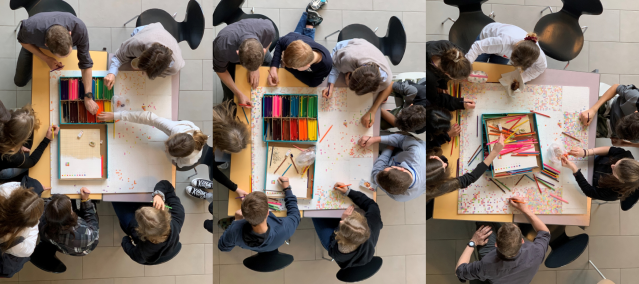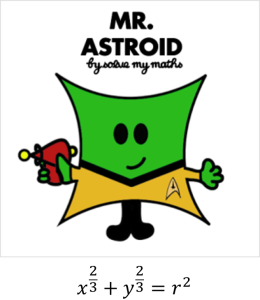To give some context for this post, I’ll start by saying that I absolutely love Craig Barton’s podcasts. Whenever I listen to one I almost always have to re-visit given the ridiculous number of ideas and claims made. One thing’s for sure – Craig Barton deserves a bloomin’ medal for the work he’s done on these podcasts and his contribution to maths education in general. It’s crazy just how good these episodes are for PD – I always learn so much – but then I always leave with more questions than I know what to do with.
With that in mind, last night I re-listened to the podcast with Greg Ashman; like every other Craig Barton podcast it’s absolutely brilliant! Greg is highly knowledgeable about Cognitive Load Theory and I took a lot away from his responses. Since the start of my career, I’ve been a proponent of a balanced view of educational theory in that I happily use explicit instruction, but also think that there’s a good chunk of mathematical knowledge that can be internalised through structured investigation or inquiry (I rarely use open investigations or inquiries). More recently, proponents of Cognitive Load Theory (CLT) have begun to swing my thoughts towards the balance between explicit instruction and investigation, and if I’m honest, I’m starting to come round to changing elements of my practice to take more account of CLT.
I’ll also be additionally honest and say that I’m a bit worried by all of this. I’m worried that teachers aren’t questioning every element of CLT and ensuring, as far as possible given that we’re in the social science game, that they dig deep into CLT to fully understand how it might affect their practice. With this in mind I have a few questions about CLT, specifically based around the Greg Ashman’s responses. I could look it all up in the Literature – assuming it’s present – but that wouldn’t be taking advantage of the benefits of social media. So here are my major questions from this podcast – hopefully some awesome person will answer these without much effort and then I’ll be happy to move forward.
Working Memory and Discovery
Greg explains a piece of interesting research conducted by Sweller that students were given some problems in which they either had to multiply by 3, or add 29 (something like that anyway). Sweller cleverly put these problems together so as to ensure that the students were simply alternating from adding 29, to multiplying by 3, to adding 29, etc. He did this to determine whether they would discover this underlying structure to the problems, or whether their working memory would be filled up by the act of determining what to do. It turned out that the wide majority of students didn’t see the underlying structure, and their full attention was on the surface operations of the problems.
Questions:
- Did Sweller notify the students that there was an underlying structure to the problems? This would clearly have an effect on their mindset during the task and might shift the focus to a higher level of discovery for more students.
- What if Sweller had simply told the students to track their calculations by just writing them down – and said nothing else about discovering anything. Students wouldn’t have to hold extraneous information in their head, and this would not affect their processing of working memory. In this case, I assume that their attention during the task would be on solving the problems, and then after some time it would be simple to recognise the deeper structure. The whole premise behind CLT is to reduce the processing of working memory, and tracking your process in a written form does not conflict with that.
Explicit Instruction vs Pure Discovery
Greg explained a separate piece of research where science students were explicitly taught concepts, and in contrast, other students were given the opportunity to discover the same concepts. When it came to the assessment, those students who had discovered those principles performed no better than those students who had been explicitly instructed during the assessment task.
Point:
- I agree with that fact that, probabilistically speaking, more students in the explicit instruction group would have attained the knowledge required for this specific assessment. That clearly has implications for teaching knowledge that we all have to be aware of.
Question:
- When did the assessment happen? Straight after the learning experience, a few weeks later? I have always thought that when learning is attached to our emotions – in this case the pleasure of discovery – that we are more likely to retain that knowledge. Of course I agree that deliberate and spaced practice, retrieval cues, etc. will also improve long term memory, but memory seems more intricate than a basic knowledge of the Forgetting Curve. Indeed, a quick google search provides a large body of research on this (Example Link). Therefore, is it plausible to think that those who discovered these principles, whatever they were, are more likely to retrieve them at a later date?
One last point I’d like to make is that I’m pleased that Craig asked Greg about the continuum of direct instruction because most things in education aren’t binary. If I say that I prefer an explicit instruction approach, then that could mean a whole world of things. I could be on the “lecturing” end of that continuum, or the more liberal end of the continuum. Some people prefer to call the more liberal end dialogic instruction (Danny Brown introduced me to dialogic teaching in this blog), where there is constant dialogue between yourself as the authority in the classroom, and your students. In this case, if you’re introducing anything, such as the formula for the area of a trapezium, you lead and steer the construction via a mixture of explanations and student responses.
So if anyone can help with the questions above I’d massively appreciate it. I can’t help thinking it’s our professional duty as educators to maximise outcomes for our students (and I think to excite their curiosity and interest in mathematics). I therefore really want to fully understand the true implications of Cognitive Load Theory on my practice.







 You can see, and understand intuitively, that the equation is a variation on a circle. In fact, the shape of the astroid looks quite close to a square. This got me thinking…does a function exist to describe any given polygon? So here goes…
You can see, and understand intuitively, that the equation is a variation on a circle. In fact, the shape of the astroid looks quite close to a square. This got me thinking…does a function exist to describe any given polygon? So here goes…



